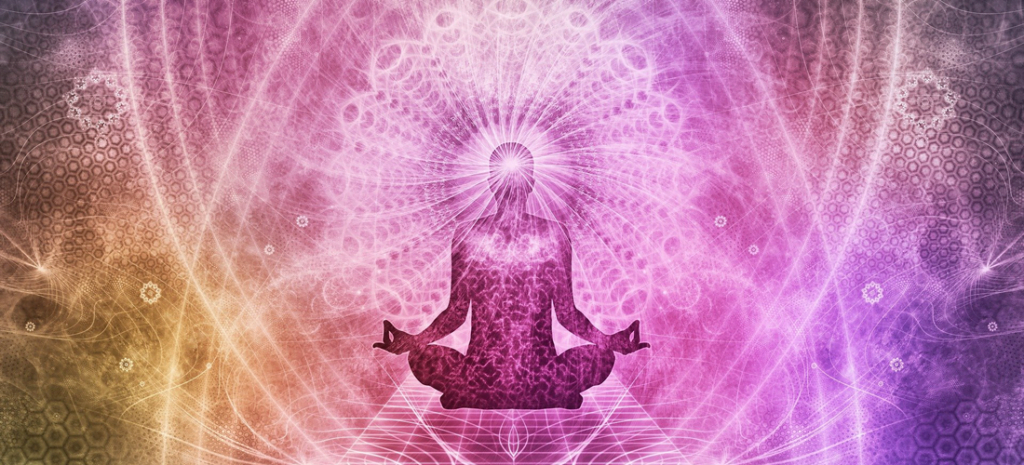Shamanic practices refer to a range of traditional healing and visionary techniques used by shamans, who are considered intermediaries or messengers between the human world and the spiritual realms. These practices often involve rituals, ceremonies, and meditative journeys. Aiming to restore balance and promote healing on physical, emotional, and spiritual levels.
Recently, there has been a resurgence of interest in shamanic healing. People around the globe are seeking holistic and intuitive approaches to health and well-being, which traditional shamanic practices provide. This revival isn’t just about healing. It also represents a broad recognition of the interconnectedness of all life and a desire to live more harmoniously with nature.
Benefits of Shamanic Practices
Shamanic practices offer a wide range of benefits, encompassing physical, emotional, spiritual, and even communal aspects of well-being. While the specific advantages may vary from person to person, here is a list of some of the key benefits associated with engaging in shamanic practices:
1. Facilitates Mental and Physical Healing
Shamanic practices can serve as a powerful catalyst for both mental and physical healing. These ancient techniques connect us to the natural world and the inner depths of our consciousness, promoting a sense of balance and well-being. During shamanic healing rituals, practitioners often enter a trance-like state, allowing them to access and work with your spiritual energies.
This process can alleviate emotional distress, facilitate the release of negative energy, and restore harmony to your mind and body. Also, these practices often involve the use of medicinal plants, which can have tangible physiological benefits. Thus, contributing to physical healing. So, stepping into the realm of shamanic practices might just be the transformative experience you need.
2. Deepens Spiritual Connection and Self-Discovery
Shamanic practices are a profound pathway towards deepening your spiritual connection and journey of self-discovery. Engaging in these ancient rituals connects you not only with the spiritual world but also with your inner self. Shamanic practices, such as drumming, dancing, and journeying, help you access altered states of consciousness. States where you can explore unseen realms and dimensions.
In these spaces, you’re free to discover more about your purpose, your passions, and your innate capabilities. You cultivate a richer, more enlightened understanding of yourself and your place within the cosmos. It’s a journey of revelation, realization, and spiritual growth.
3. Emotional Healing and Trauma Resolution
Shamanic practices have long been recognized as powerful tools for emotional healing and trauma resolution. These practices offer you a unique path, guiding you towards inner peace and wholeness. They allow you to delve into your subconscious. Helping you face and address the emotional pain that you may have been carrying for years. Through the use of various techniques, such as guided visualization, drumming, and ceremonial rituals, shamanic practices facilitate healing by encouraging the release of deep-seated emotional blocks and trauma.
They provide you with a safe space to reconnect with yourself on a profound level, fostering resilience and emotional equilibrium. Remember, emotional wellness is just as vital as physical health. Shamanic practices can play a pivotal role in achieving this harmony.
4. Connection with Nature and the Cosmos
Shamanic practices offer you a profound way to connect with nature and the cosmos. These ancient rituals teach you to view the world as an interconnected matrix of life. A web where every element has its own spirit. Through shamanic practices, you enter into a dialogue with the natural world and the cosmos. Deepening your understanding of your place within these vast systems.
You begin to appreciate the rhythms and cycles of nature, aligning your own life more harmoniously with these natural processes. This connection fosters a sense of belonging, bringing a deep peace and contentment. You realize you are part of a larger, cosmic order. It’s an experience that can be transformative. Providing a more holistic view of life and our interconnectedness with the world around us.
5. Fosters Community and Harmonious Relationship
Shamanic practices often involve group rituals and shared experiences that can create a profound sense of unity and camaraderie. These shared moments can lay the groundwork for a strong, deeply connected community. Furthermore, shamanic practices promote empathy and understanding by helping individuals explore different perspectives and realities. This new level of understanding can bridge divides, mend misunderstandings, and foster harmonious relationships among community members.
6. Accessing Wisdom and Guidance
The ancient healing traditions of shamanic practices place significant emphasis on connecting to the spiritual plane. This is believed to hold profound wisdom and guidance. You learn to attune yourself to the subtle energies and messages from the spiritual entities. This wisdom isn’t just abstract or philosophical; it can be highly practical and personalized. It can offer guidance that is relevant to your particular life circumstances. It’s like having a compass guiding you on your life’s journey. Offering insights and directions that you may not have access to otherwise.
It’s important to note that the benefits of shamanic practices can vary depending on individual experiences, intentions, and the specific practices engaged in. It’s also advisable to approach shamanic practices with respect and cultural sensitivity. We recommend practicing under the guidance of qualified practitioners to ensure safe and responsible engagement.
The Roots of Shamanic Practices
Shamanism, with its roots in ancient cultures, is one of the oldest spiritual practices known to humans. It stretches back tens of thousands of years, with evidence of shamanic practices found on all inhabited continents. Its history is as diverse as the cultures it originates from. You see, the term ‘shamanism’ was first coined in Siberia, referring to local spiritual practices.
However, it has since been adopted to describe similar practices in cultures around the world. From the intricate spirit dances of the Native American tribes to the mystical rituals of the Siberian Tungus, shamanic practices have historically been about connecting with the spiritual world to seek healing and wisdom. Remember, these practices have evolved over many millennia, shaped by the unique beliefs, traditions, and environments of countless societies.
Core Elements of Shamanic Practices
Shamanic practices encompass a wide range of rituals and techniques, but they share several core elements that form the foundation of this spiritual tradition. These core elements are essential for understanding the essence of shamanism and its approach to healing, spirituality, and transformation. Here are the core elements of shamanic practices:
1. Journeying and Altered States of Consciousness
This practice involves entering a trance-like state where the usual limitations of space and time dissipate, allowing the practitioner to journey through spiritual realms. The purpose of this extraordinary state of consciousness is multifold.
Firstly, it helps individuals gain deep insights into their lives, helping them resolve personal issues or make important decisions. Secondly, it enables practitioners to communicate with spiritual entities, gathering wisdom and healing energies. This unique element of shamanic practices emphasizes the deep interconnectedness of all life and promotes holistic healing and spiritual growth.
2. Spiritual Guides and Allies
Spirit guides and allies are key figures that shamans connect and work with in the spirit realms. These spiritual beings can range from ancestors, animal spirits, to deities from various cultural pantheons. The main purpose of working with these guides and allies is to tap into the wisdom they hold. They aid practitioners in navigating through spiritual realms and provide insights for healing. They guide one towards a deeper understanding of oneself and the universe. Engaging with spiritual guides and allies is a core element of shamanic practices. Fostering a deeper connection between the visible world and the hidden layers of existence.
3. Healing and Energy Work
This concept is based on the belief that we all possess an energy field or aura that surrounds and permeates our physical bodies. Shamanic practitioners view illness and dysfunction as a disruption in this energy field.
You use this method as a way to restore balance and enhance the flow of energy within your body. It’s about harnessing the power of the universe, tapping into its natural rhythms and healing potential. This energy work can be a catalyst for profound personal transformation. It can lead not only to physical wellbeing, but emotional and spiritual growth as well.
4. Connection to Nature and the Elements
You’ll find that forming a relationship with nature and the elements – Earth, Air, Fire, and Water – is a vital component. This bond is about more than just appreciating the beauty of the world around us. It’s about recognizing ourselves as an integral part of the natural world. You commune with the spirits of plants, animals, and places. You call on the elements of earth, air, fire, water and spirit to cleanse, energize and transform. Through drums, rattles, music and dance, you connect to the rhythms of Nature.
Time spent in wilderness and solitude strengthens your bond with Nature and Elemental beings. Their wisdom guides you in your work. You may rely on animal spirits as power allies, or be directed to medicinal plants for healing ceremonies. Nature spirits support you in maintaining energetic balance and flow.
5. Rituals and Ceremonies
Rituals and ceremonies are a core element of shamanic practices. They serve crucial roles in cultivating a deeper connection to ourselves and the world around us. You’ll find that they harness the power of symbolic action and intentional focus to foster healing, transformation, and personal growth.
Rites of passage guide individuals through thresholds into new stages of life, such as adulthood, marriage or elderhood. Your rituals help “mark the spot” during these transitions. They provide a ritual structure for the person to safely let go of the old and embrace the new.
Healing ceremonies direct spirit energies to transform negative conditions into wholeness. The rituals combine offerings, intuition, and actions to open a sacred space for miracles to occur. They engage the invisible realms to manifest positive change.
6. Cosmology and Worldview
Cosmology and Worldview represent a foundational element of shamanic practices. In essence, it refers to how shamans perceive the universe and their role within it. Shamans hold a holistic view of the world, seeing all things as interconnected and interdependent. This cosmology often includes a belief in a multi-layered universe. With the physical realm we inhabit being just one of many.
Their worldview also encompasses a deep respect for nature and all its inhabitants. They believe that everything possesses a spirit or consciousness. In shamanic practices, this understanding of cosmology serves as a guiding principle. It informs how shamans interact with the spiritual realm during their rituals and healing practices. Through this, they aim to restore balance and harmony within the individual and the larger world.
Understanding these core elements of shamanic practices provides insight into the holistic and multifaceted nature of shamanism. While specific practices may differ between cultures, these foundational elements are central to the shamanic experience. As well as, its focus on healing, spiritual growth, and connection to the broader universe.
Ethical Considerations and Responsible Practice
It’s essential to approach shamanic practices with respect and understanding. Keep in mind that these practices originate from indigenous cultures with deep-rooted traditions. Misappropriation, such as using these practices without permission or outside of their cultural context, is ethically questionable.
Shamanism is not a quick-fix or a path to instant enlightenment; it requires dedication, patience, and respectful engagement. Always remember, it’s not about exploiting the practices for personal gain but about seeking spiritual growth and healing. Moreover, ensure you’re learning from reputable sources who honor the traditions and cultures from which shamanic practices stem.
When it comes to shamanic practices, the use of tools and substances should always be approached with utmost responsibility and respect. These practices are not simply about engaging with the spiritual realm. They are also about understanding the importance of balance and harmony.
For instance, you might come across sacred substances like Ayahuasca or Peyote, which are known for their powerful effects on consciousness. However, these are not substances to be used lightly or recreationally. They are meant for deep spiritual work and should only be used under the guidance of an experienced shaman.
The same goes for tools like drums, rattles, or feather fans. They are not mere accessories, but sacred items that deserve care and respect. Always remember, responsible use is a key part of shamanic principles. They help you connect more deeply with yourself and the world around you.
Conclusion
Incorporating shamanic practices into your daily routine can be incredibly transformative. These ancient traditions offer a unique pathway to self-discovery and healing that is deeply rooted in nature and the spirit world. Whether it’s through journeying, soul retrieval, or connecting with your spirit guides, shamanic practices open up a new dimension of understanding, bringing harmony to your life. Remember, the journey towards self-discovery is a personal one, and there’s no right or wrong way to go about it.










